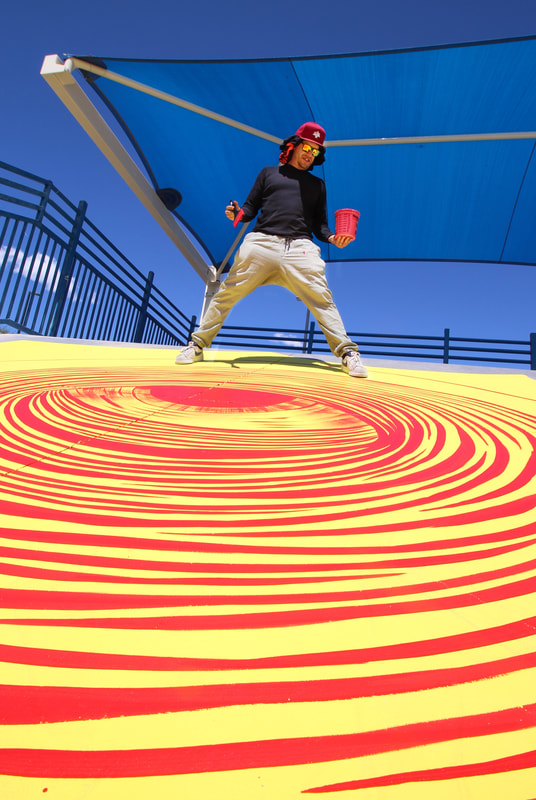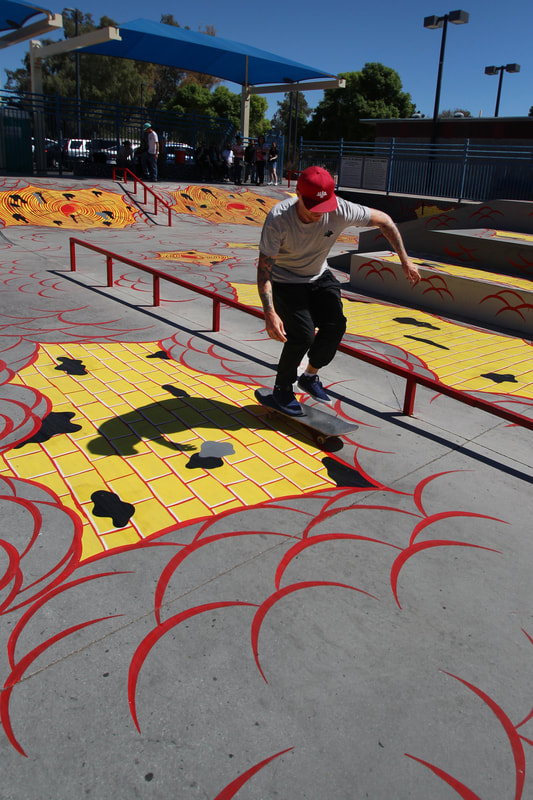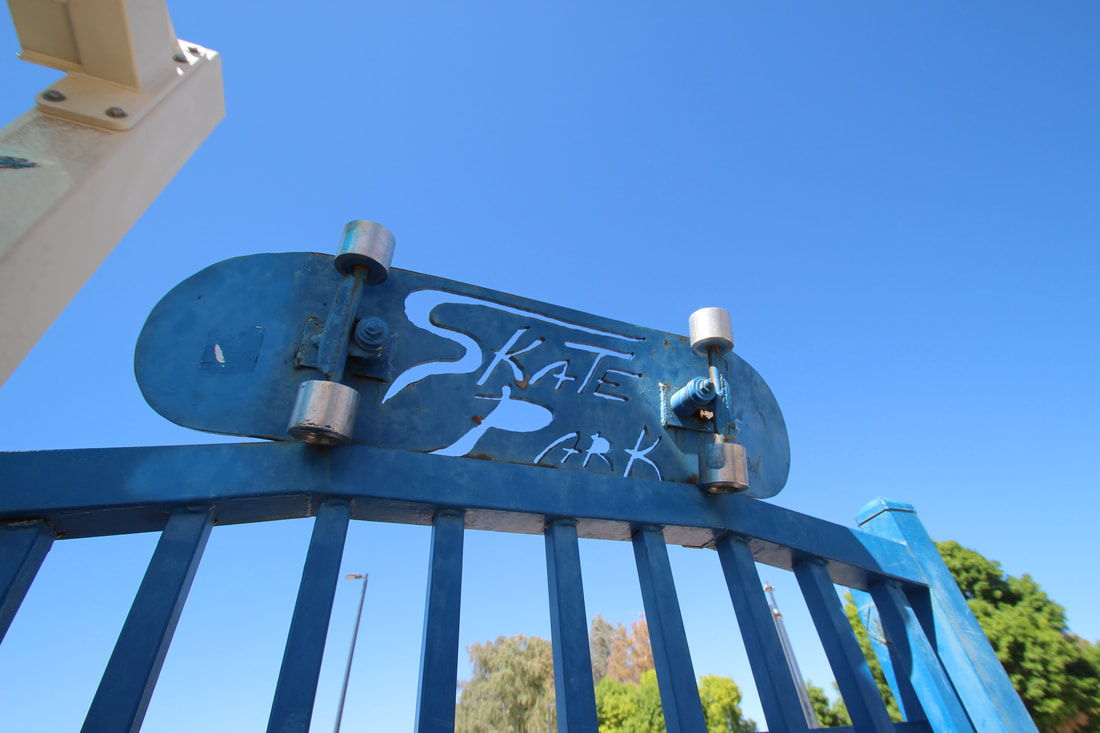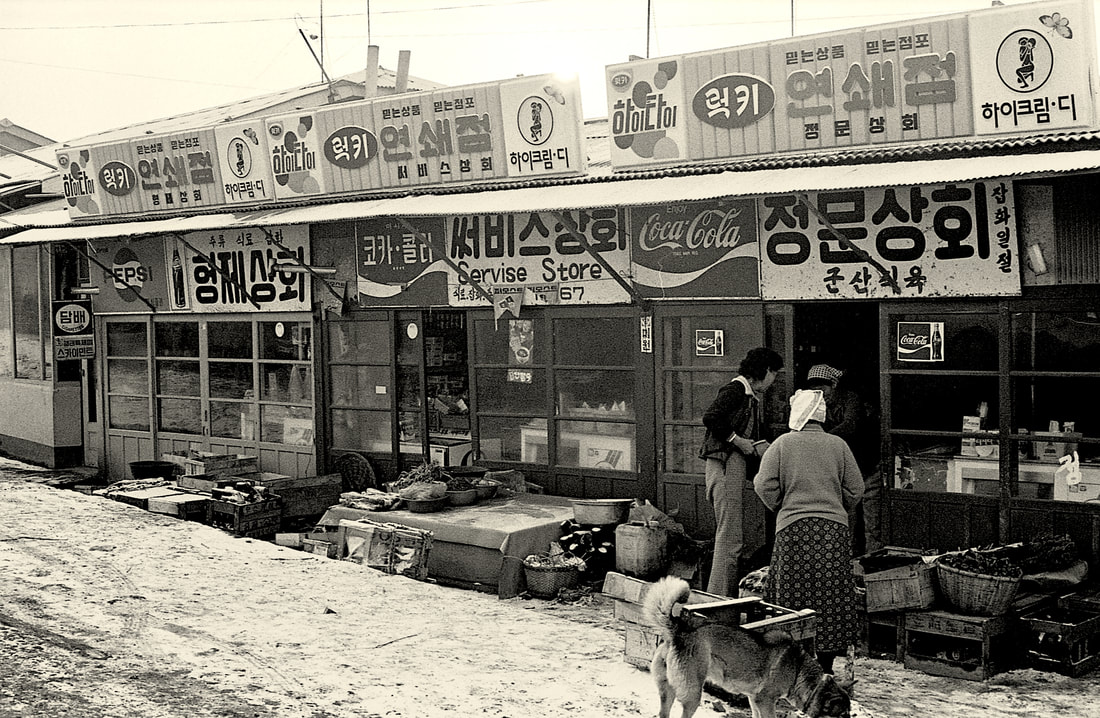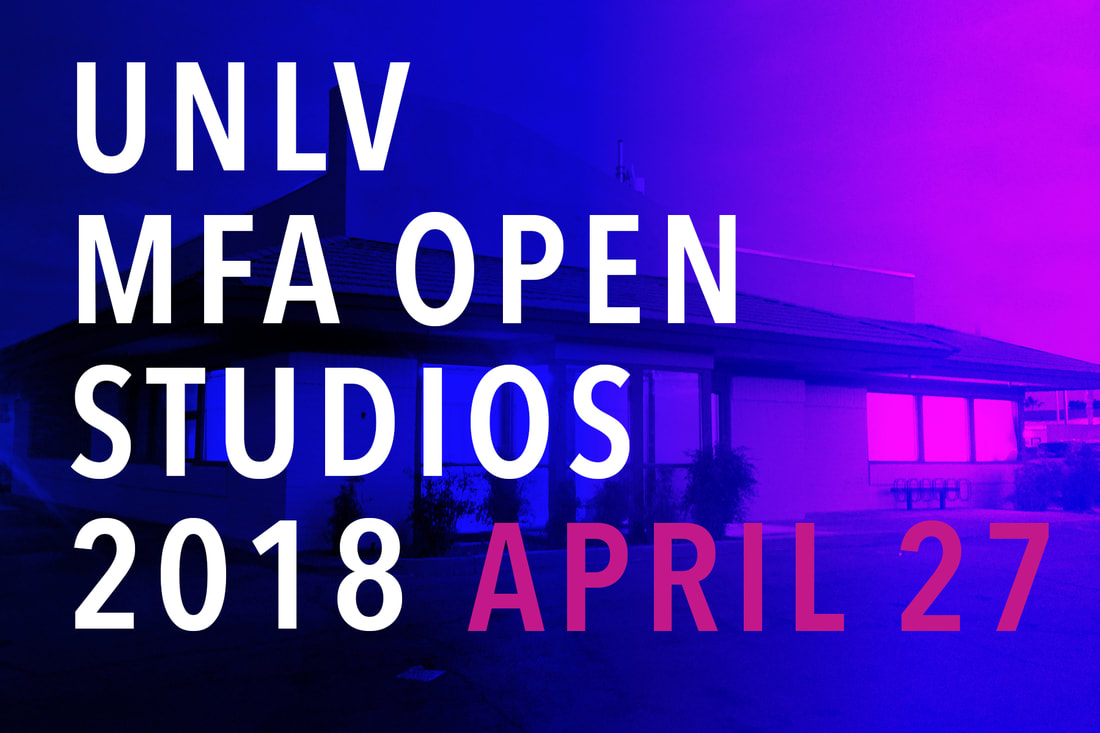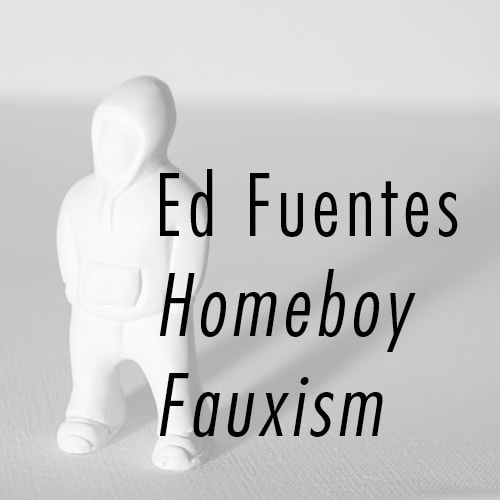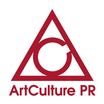|
Andrew Schoultz on top of his world. Photo: PaintThisDesert Andrew Schoultz rode a Las Vegas skate park with his brush. He painted eyes and patterns on bright yellow bursts with broad red strokes, playing with the space like a skateboarder doing tricks on a rail. Schoultz adapted his style to other skate parks, and now Winchester has his signature look, a simpler read of his work. A graphic art version of his complex paintings, murals, and installations. A skateboarder himself, the Los Angeles-based artist works with the structure of skate parks designed to simulate random infiltration in public space, which brings street art back to a supportive subculture. The infrastructure also changes the idea of murals as art just on walls. It is also a visual form for sloping and horizontal surfaces. Often his art in public space or in galleries is a comment on globalization through relic references, such as illuminated manuscripts and ancient cartography. At Winchester, the use of bold line and form are simpler. In some spots they appear as if they were applied by skateboard wheels that were dipped in paint. That allows Schoultz to still tap into his style of fanciful narratives as a leave-behind. The untitled public art was coordinated by Clark County’s public art programming under the county’s arts plan and The Barrick Museum of Art. It’s the first stage of an exhibition that starts at Winchester before riding into The Barrick Museum of Art as an installation over the summer. It is all reflective of how street art and skaters share a long timeline. In the early 70s, when artists took to the streets to paint ideas, suburban pools were emptied to accommodate skaters. Skate park design is based on that drain and infiltration, which led to artists painting works that complimented color and movement that is physical and emotional. The new work at Winchester is part of that tradition. White patches shaped as bursts of energy were painted on bright yellow by a crew made up of project staff and volunteers from the Las Vegas art community. Using a rich red, Schoultz painted the major illustrations with gestural language. The main ramp has the lead single eye, a concrete cyclops, that watches over other eyes that gaze back. Rhythmic lines give each pupil, or the grey negative space, a vibration. Other spots look like an opening to an exposed yellow brick road with drops of grey and white. When painting the larger ramp, Schoultz sat on the slope, sunglasses cutting off glare, towel preventing his neck from matching the red paint. He worked the brush like a skater doing maneuvers, making the hard surface work with methodical play and pressure to control the flow: a movement across the surface. Skater and painter were as one. He guided others in the adding details, like the brick line patterns, or poles treated with red aerosol. The artist, county, and university successfully practiced an established institutional connection. In 2011, when The Museum of Contemporary Art, Los Angeles held their exhibition “Art in The Streets,” they noted the significance of street art to skateboarding aesthetic, including having pro skater Lance Mountain and artist Geoff McFetridge produce a skate ramp design. Just last month, artist-activist Ai Weiwei and street artist Shepard Fairey designed skateboards with political commentary. Though Schoultz does not shy away from a spray and counter spray of social commentary, the new design at Winchester is about adding color to space that compliments movement, a recreational version of an underground aesthetic.
Disclosure: My GA at UNLV was mainly at the Barrick Museum of Art, and a former contributor for Clark County’s public art programming. That said, I agree with the critique by Daniel, 16, who visited the park when it reopened April 21. In a positive affirmation of the skate park's new look the skateboarder said: “This is sick.”
0 Comments
Photo: Eugene Rolfe
FIELD NOTES: My MFA career at UNLV winds down with an invitation to the public to visit the artist’s studios, in my case a former classroom in the oldest building on campus, Grant Hall. The current MFA Candidates are across the street in GRA, a former Carl's Jr . . . As the pitch says the evening will be a way to see MFA's work in progress. For us short-timers it is a chance to hold a fire sale. ANOTHER PITCH: I planned to use the last few weeks to get final studio time in, so there may be non-Bunko stuff to see. Or you can pick up a BUNKO box for ten bucks. Some are spoken for. A few will be available. ALSO: That evening will also be the closing reception for the talented Nanda Sharif-Pour’s MFA Midway Exhibition, “Alienation.” That will be from 6:30 to 9 p.m. . . . Incoming Artists: There is exciting work by UNLV BFA students Amanda Keating, Clarice Cuda, Julie Meyers, Nicole Weber, Sarah Arnold and Ty Suksangasophon. They will talk about their work at the Marjorie Barrick Museum of Art Auditorium at 6 p.m. The exhibition and opening reception at Donna Beam Fine Art Gallery will be from 7:30 to 9 p.m. . . Last but not least: Laura Brennan's Thesis exhibition, "Transience," will be from June 8 - June 22. The reception will be June 15, 2018, at the Donna Beam Fine Art Gallery. |
An Online Arts Journal
Exhibition:
February 2 – March 31, 2019 Artist Reception and Gallery Talk: Sunday, February 10, 2019, 4 p.m.–7 p.m. S P O N S O R
ARCHIVES
January 2019
TAGS
All
|
